Picric-A
National Hazard
   
Posts: 796
Registered: 1-5-2008
Location: England
Member Is Offline
Mood: Fuming
|
|
Interesting uses of caffein?
Hi, i have just been given a rather (10yr) old botle of caffein (50g in total).
Are there any intersting uses for this? possible (somehow) make malonic acid and diethylurea from it?
Thanks,
P.s. I dont plan on consuming any, it has been in the lab too long 
|
|
|
mr.crow
National Hazard
   
Posts: 884
Registered: 9-9-2009
Location: Canada
Member Is Offline
Mood: 0xFF
|
|
You could give some to spiders, like the youtube video
Ok seriously, I think caffeine doesn't have any uses as a reagent. You could try to demethylate it to Theobromine or Theophylline. It would be
interesting to see which nitrogen is easiest to demethylate, if its possible.
|
|
|
Sedit
International Hazard
    
Posts: 1939
Registered: 23-11-2008
Member Is Offline
Mood: Manic Expressive
|
|
The Tetra-methylated version of it is a known sedative which will undergo hydrolysis to produce Methylamine. I will try to look for a reference for
you since im pretty sure I have one.
Knowledge is useless to useless people...
"I see a lot of patterns in our behavior as a nation that parallel a lot of other historical processes. The fall of Rome, the fall of Germany — the
fall of the ruling country, the people who think they can do whatever they want without anybody else's consent. I've seen this story
before."~Maynard James Keenan
|
|
|
Nicodem
Super Moderator
      
Posts: 4230
Registered: 28-12-2004
Member Is Offline
Mood: No Mood
|
|
Caffeine can form coordination bonds with some metals. It is a harder ligand than phosphines and similar so it should form only weak coordinative
bonds with most transition metals, but still... (see for example: Organometallics, 28 (2009) 3906-3915; Turkish Journal of Chemistry,
31 (2007) 97-103; Journal of Chemical Crystallography, 36 (2006) 571-580; Thermochimica Acta, 406 (2003) 245-248; Inorganic
Chemistry, 24 (1985) 1986-1992). It can also act as a carbene ligand for ruthenium (Inorganica Chimica Acta, 361 (2008) 2929-2933).
It can be directly lithiated at the position 8 (the CH between the two imidazol nitrogens, for example see Organic Letters, 11 (2009)
1837-1840; Journal of Organic Chemistry, 71 (2006) 8842-8846).
It can also be arylated via direct C-H activation at the position 8 (for example see Chemistry--A European Journal, 15 (2009) 1337-1340;
Tetrahedron Letters, 49 (2008) 1045-1048; Journal of the American Chemical Society, 129 (2007) 12404-12405; Organic Letters,
9 (2007) 1449-1451).
With very strong alkylating reagents (like alkyl triflates, dialkyl sulfates, alkyl iodides, etc.) it can be N-alkylated (Catalysis
Communications, 9 (2007) 465-469; Organometallics, 23 (2004) 1928-1931; Khimiya Geterotsiklicheskikh Soedinenii (1989)
1570-1571).
It can be 8-alkylated via radical alkylation (for example WO2007055170; Journal of the Chemical Society, Perkin Transactions 1 (1990)
1225-1226; Tetrahedron, 45 (1989) 721-732; Tetrahedron Letters, 27 (1986) 6337-6338; Chemistry Letters (1985) 1441-1442).
Decomposition of caffeine in HCl/H2O2, HNO3, NaOH or other reagents gives a variety of interesting heterocyclics (Journal of Heterocyclic
Chemistry, 27, (1990) 667-671; Chemical & Pharmaceutical Bulletin, 30 (1982) 941-945; JP50013377).
The most electrophilic of the two carbonyl groups in caffeine can be transformed into a C=S group by using P2S5 (Synthesis (1987) 256-258).
An interesting synthetic strategy for ring expansion of caffeine's imidazole ring has been developed to give some weird heterocycles (Chemical
& Pharmaceutical Bulletin, 33 (1985) 3681-3688).
Photochemical reactions of caffeine with ketones and types of compounds have been described (Canadian Journal of Chemistry, 48 (1970)
1716-1721; Chemical Communications (1969) 305-306; Chemische Berichte, 114 (1981) 2844-2858).
Caffeine can be halogenated at position 8 (Archiv der Pharmazie und Berichte der Deutschen Pharmazeutischen Gesellschaft, 289 (1956) 211-217;
Bulletin de la Societe Chimique de France (1959) 1793-1798). The products can undergo addition-elimination nucleophilic substitutions.
[Edited on 16/10/2009 by Nicodem]
…there is a human touch of the cultist “believer” in every theorist that he must struggle against as being
unworthy of the scientist. Some of the greatest men of science have publicly repudiated a theory which earlier they hotly defended. In this lies their
scientific temper, not in the scientific defense of the theory. - Weston La Barre (Ghost Dance, 1972)
Read the The ScienceMadness Guidelines!
|
|
|
jon
Hazard to Others
  
Posts: 459
Registered: 11-1-2006
Member Is Offline
Mood: paranoid distrustful apprehensive
|
|
viagra starts w caffiene
|
|
|
kmno4
International Hazard
    
Posts: 1497
Registered: 1-6-2005
Location: Silly, stupid country
Member Is Offline
Mood: No Mood
|
|
Because of large amounts of no-caffeine coffee production, caffeine became very cheap - price is less than 40 american dollars per 1 kg (guaranteed
quality). In 25 kg bags even cheaper, heh. Of course made in People's Republic of China 
A little out of topic informations, just by the way.....
[Edited on 11-11-2009 by kmno4]
|
|
|
Picric-A
National Hazard
   
Posts: 796
Registered: 1-5-2008
Location: England
Member Is Offline
Mood: Fuming
|
|
How does viagra starts form caffein? i cant see any resembelance in the displayed formulars...
|
|
|
User
Hazard to Others
  
Posts: 339
Registered: 7-11-2008
Location: Earth
Member Is Offline
Mood: Passionate
|
|
Uhm, yeah well i did use PA grade caffeine a couple of times (on myself that is).
It was from a new bottle we received in the lab, so no dirty spatula's.
It is a interesting use for caffeine  . .
Did some dose calculations and decided that 800mg would be acceptable, equivalent of quite some coffee.
I suspended it in water a thrown it down my throat.
After about half an hour it started working and it wasnt by far a good feeling.
Very shaky nervous feeling that kept hanging for about 4 hours before it started wearing off.
I will never do this again, actually i hate it.
Still sometimes when i drink coffee i get a bit of the same feeling, it triggers some sort of reminding and it isnt nice.
I am not really into doing drugs, i see it as some sort of experiment.
What a fine day for chemistry this is.
|
|
|
Picric-A
National Hazard
   
Posts: 796
Registered: 1-5-2008
Location: England
Member Is Offline
Mood: Fuming
|
|
800mg  
 Pro plus pills contain 25mg each!!! you fucked up your calculations!!! Pro plus pills contain 25mg each!!! you fucked up your calculations!!!
|
|
|
User
Hazard to Others
  
Posts: 339
Registered: 7-11-2008
Location: Earth
Member Is Offline
Mood: Passionate
|
|
No i did not, it is equal to about 10 cups of very strong coffee.
a good strong cup of coffee contains somewhere around 90-100mg of caffeine.
OD is at 10.000 mg so , yeah it was quite much, still not anywhere near danger area.
What a fine day for chemistry this is.
|
|
|
Picric-A
National Hazard
   
Posts: 796
Registered: 1-5-2008
Location: England
Member Is Offline
Mood: Fuming
|
|
That OD changes by +- 5g depending on how used to caffein your body is, ie. if you have 4 cups of coffee a day then ur OD would be in the 10g area, if
you dont dirnk coffee/tea ect then arounf 5g would be enough to give give you a heart attack.
|
|
|
User
Hazard to Others
  
Posts: 339
Registered: 7-11-2008
Location: Earth
Member Is Offline
Mood: Passionate
|
|
Iam a heavy coffee drinker 
Let me be clear that the dose was rather high, i am aware of that.
What a fine day for chemistry this is.
|
|
|
Vogelzang
Banned
Posts: 662
Registered: 26-4-2008
Member Is Offline
Mood: No Mood
|
|
Selective Extraction of Palladium with Caffeine from Acidic Chloride Media.
Accession number;99A0538798
Title;Selective Extraction of Palladium with Caffeine from Acidic Chloride Media.
Author;KAIKAKE KATSUYA(Miyazaki Univ., Fac. of Eng.) BABA YOSHINARI(Miyazaki Univ., Fac. of Eng.)
Journal Title;Journal of the Chemical Society of Japan, Chemistry and Industrial Chemistry
Journal Code:F0226B
ISSN:0369-4577
VOL.;NO.6;PAGE.391-395(1999)
Figure&Table&Reference;FIG.9, REF.11
Pub. Country;Japan
Language;Japanese
Abstract;In order to examine the possibility of caffeine as an extractant, the extraction of metal ions from acidic chloride media was studied at 298K
using the mixture solvent of chloroform and 2-ethyl-1-hexanol. Caffeine has exhibited a high selectivity for palladium(II) over base metals such as
copper(II), nickel(II), and iron(III), and over precious metal such as platinum(IV). The stoichiometric relation in the extraction of palladium(II)
with caffeine was elucidated by examining the effects of chloride ion, hydrogen ion, and caffeine concentrations on its extractability. In addition,
palladium(II) was found to be extracted selectively with caffeine from the mixture containing a 25-fold amount of platinum(IV) or copper(II). The
stripping of palladium(II) was performed to an extent of 80% by a single batchwise treatment with an aqueous mixture solution of hydrochloric acid and
thiourea. (author abst.)
http://sciencelinks.jp/j-east/article/199914/000019991499A05...
|
|
|
Saerynide
National Hazard
   
Posts: 954
Registered: 17-11-2003
Location: The Void
Member Is Offline
Mood: Ionic
|
|
Good god! I'd prolly be having a total freak out 
Thats like 10 cans of Redbull 
The last time I drank 4 espressso shots to stay up all night finishing a problem set, I ended up so jittery that I became less productive. Then I
stared at the ceiling for 6 hours as I tried to sleep when I finished the homework 
[Edited on 11/12/2009 by Saerynide]
"Microsoft reserves the right at all times to monitor communications on the Service and disclose any information Microsoft deems necessary to...
satisfy any applicable law, regulation or legal process"
|
|
|
watson.fawkes
International Hazard
    
Posts: 2793
Registered: 16-8-2008
Member Is Offline
Mood: No Mood
|
|
Standard over-the-counter dose of caffeine is 200 mg, at least in the USA. Search for yourself on Google.
|
|
|
anotheronebitesthedust
Hazard to Others
  
Posts: 189
Registered: 24-6-2007
Member Is Offline
Mood: No Mood
|
|
A guy I work with drinks sometimes well over 10 cups of coffee in a 8 hour shift. Not to mention he smokes 2 packs of cigarettes a day, never does any
type of exercise/activity, and is extremely lazy. I can't believe he hasn't had a heart attack yet. It's funny though because I jog 5 miles on a
regular basis and keep my body in good physical shape, and yet I drink 1 cup of coffee and I get so jittery that it's uncomfortable for me. Weird eh?
|
|
|
Vogelzang
Banned
Posts: 662
Registered: 26-4-2008
Member Is Offline
Mood: No Mood
|
|
What the knee-jerk assumer least expects:
http://www.newscientist.com/article/dn14151-guzzling-coffee-...
|
|
|
Vogelzang
Banned
Posts: 662
Registered: 26-4-2008
Member Is Offline
Mood: No Mood
|
|
Coffee even lowers the risk of colon cancer. There's lots of links on Google.
http://www.google.com/#hl=en&source=hp&q=coffee+colo...
|
|
|
astroturf
Harmless

Posts: 6
Registered: 15-10-2009
Location: Melbourne, Australia.
Member Is Offline
Mood: No Mood
|
|
I am the same as anotheronebitesthedust. If I drink 1 cup of strong coffee or a can of coca cola I get so anxious I can hardly talk to people for 8
hours. Therefore I avoid all forms of caffeine intake.
|
|
|
Boffis
International Hazard
    
Posts: 1867
Registered: 1-5-2011
Member Is Offline
Mood: No Mood
|
|
Some time ago I came across a paper by E. Fischer (1) describing the products of the reaction between caffeine and potassium chlorate in hydrochloric
acid. The products are 1,3-dimethylalloxan and methylurea but 8-chlorocaffeine is produced in copious amounts as an intermediate product. The process
sounded relatively easy and the product interesting so I tried it twice, as detailed below. These experiments could have been posted into several
threads but I am posting them here because Nicodem posted a number of highly interesting reference above and it would be a pity for them to "get
lost".
The significance of dimethylalloxan is that it condenses with hydroxylamine to give dimethylvioluric acid an interesting reagent for alkaline earth
metals. While 8-chlorocaffeine was not isolated I think it could be easily by simply reducing the amount to chlorate used. I hope these prelimenary
experiments prompt other to have a go and with more success
In E Fischer's paper he isolated the dimethylalloxan as the sparingly soluble partial reduction product amalinic acid (tetramethylalloxantin) and then
re-oxidises it to the alloxan derivative with nitric acid though commenting that dichromate had been used by others.
Experiments;
Attempted direct synthesis of 1,3-dimethylvioluric acid from Caffeine:
14.977g of caffeine were dissolved in 21ml of 30% hydrochloric acid and 45ml of water by warming gently to 50°C and then commencing the addition of
5.700g sodium chlorate. The sodium chlorate was added in small portions over a period of about 1 hr at such a rate that the temperature was maintained
close to 50-55°C. Occasionally the temperature would rise suddenly to close to 70°C after several small additions of sodium chlorate, there appears
to be an induction period or temperature and slow addition is essential. A cold water bath was required on several occasion to check the temperature
rise. Over cooling to below 50° stalls the reaction.
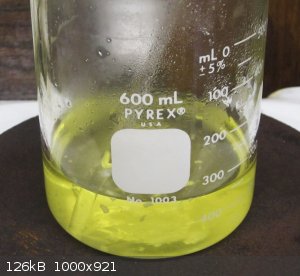 Fig 1 After the addition of a little chlorate the solution turns yellow. Fig 1 After the addition of a little chlorate the solution turns yellow.
The solution quickly becomes yellow and an exothermic reaction set in. After a short time the solution turns cloudy and then a precipitate of
8-chlorocaffeine starts to form as a cream yellow solid. After the addition of about half of the sodium chlorate the reaction mixture becomes a
porridge like slurry of chlorocaffeine. With continued addition the chlorocaffeine slowly re-dissolves and eventually gives a clear yellow solution.
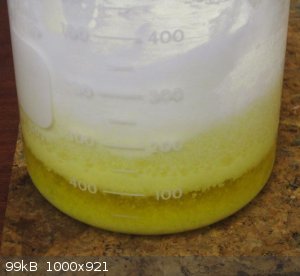 Fig 2 Chlorate addition half way much chlorocaffeine precipitates. Fig 2 Chlorate addition half way much chlorocaffeine precipitates.
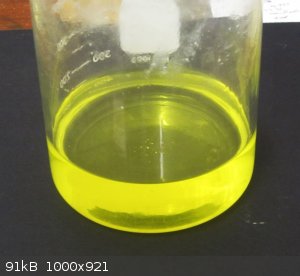 Fig 3 Chlorate addition complete giving a clear yellow solution. Fig 3 Chlorate addition complete giving a clear yellow solution.
Rather than isolate the dimethylalloxan by reduction to tetramethylalloxantin as described by Fischer I decided to try and precipitate the
dimethylalloxan as the the oxime (dimethylvioluric acid) by the direct addition of hydroxylamine solution. The reaction mixture was first treated with
10% sodium metabisulphite solution until it no longer smelt of chlorine and then the acid was partially neutralised by adding 20ml of 40% NaOH
solution to give a pH of about 4.5. 20ml of 25% hydroxylamine solution, roughly a twofold molar excess (from ice cold hydroxylammonium chloride and
sodium hydroxide solutions mixed externally) were added. The solution immediately acquired a raspberry red colouration indicating the formation of a
violuric acid derivative (violuric acid is colourless but gives a red colouration with sodium ions). The solution was cooled in the fridge overnight
but no crystals formed.
The reaction solution was vacuum evaporated to slightly less than half its original volume and cooled. The evaporation caused the red colour to fade
to a pale orange but after 24 hours only a little salt had crystallised in small cubes. Repeated evaporation to half volume again resulted in a pale
orange syrup and much white crystalline solid but after filtering and washing with alcohol proved to be merely salt. The filtrate refused to
crystallize even when mixed with a little ice cold alcohol or water and tested with barium acetate failed to give a coloured crystalline precipitate
nor did it give an intense blue colour with ferrous sulphate. These reactions seem to indicate that the violuric acid derivative had been totally
decomposed.
The preparation was repeated using twice the original quantity of caffeine and using the hydrogen sulphide reduction of E Fischer to recover the
dimethylalloxan as the sparingly soluble tetramethylalloxantin.
2) 29.960g of caffeine were dissolved in 42ml of 30% hydrochloric acid and 90ml of water by warming to 50°C and then adding slowly in small portions
at a time 11.56g of sodium chlorate. The addition took just over an hour. The reaction is rather exothermic and difficult to control even with a cold
water bath at hand. Cooling the reaction mixture too quickly or harshly tended to stall the reaction and the reaction vessel had to be return to the
hot plate which tended to cause the reaction to run away with the temperature sometimes rising as high as 77°C.
As before after the addition of about half of the chlorate the reaction mixture became a thick slurry of chlorocaffeine which dissolved slowly on
further addition of sodium chlorate. Once the addition was complete and a clear yellow solution was obtained 10% sodium metabisulphite solution was
added until the solution no longer gave a blue colour with starch-iodide paper.
Hydrogen sulphide was then passed through the solution using an inverted funnel that just touched the surface of the liquid to prevent suck-back. The
gas generator was charged with 24g of coarsely crushed ferrous sulphide and the dropping funnel with 35ml of 30% hydrochloric acid. The gas was washed
by passing through a washing bottle containing just enough water to cover the bottom of the inlet tube. The rate of acid addition was adjusted to give
about 1 bubble of H2S per second at the wash bottle and the apparatus left to run until the acid was exhausted. The pale yellow crust that formed
around the base of the funnel was broken away every 10-15 minutes but stirring or swirling the beaker.
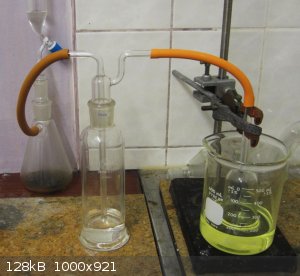 Fig 4 The hydrogen sulphide gassing set-up. Fig 4 The hydrogen sulphide gassing set-up.
When gas production had practically ceased the equipment was dismantled and the precipitate recovered by filtration at the pump and washed with
copious amounts of cold water practically odourless. The yield of dried product was 9.76g and is clearly a mixture of sulphur and a granular white
material.
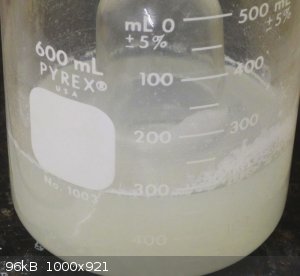 Fig 5 White precipitate of sulphur and alloxantin derivative. Fig 5 White precipitate of sulphur and alloxantin derivative.
Fischer states that the crude material was recrystallized from a large volume of water but gives no clear guidance as the quantity require. So 400ml
of water was chosen as a starting volume and after simmering the raw product in this volume of water for 10 minutes only a little finely dispersed
sulphur appeared to remain undissolved. Some of the sulphur was very fine so a little (0.25g) of decolourizing carbon was added and the solution
filtered hot. On cooling a crop of small equant shiny crystals formed. These were recovered by filtration and washed with a little cold water and
dried. The filtrate was evaporated on a water bath the 100ml and cooled but only a trace of additional tetramethylalloxantin formed, this was
recovered, washed and dried as before. The combined yield was 1.37g which is a very poor yield but little further material could be obtained from the
second filtrate. The amount of sulphur-charcoal mixture on the filter seemed rather too small to account for the large loss during recrystallization.
Discussion: The first experiment probably failed because I failed to completely neutralise the hydrochloric acid present and the hydroxylamine was
simply converted back to the hydrochloride and so the process may be worth another try using complete neutralisation before adding the hydroxylamine.
A more reliable method of ensuring that all of the chlorine/chlorine dioxide had been destroyed may also help.
The overall yield is stated by Fischer to be about 60% with reasonable care but in the second experiment my yield was only about 6% depending on the
nature of the hydrate. There are several places where loss may have occurred, the most obvious is the difficulty in controlling the temperature during
the initial oxidation. It is worth noting that Nightingale (2) in the preparation of alloxantin from uric acid by the same method stress the need for
accurate temperature control and that for larger quantities the oxidation stage should be carried out on batched of 15g of uric acid.
A further possible loss may have occurred during the hydrogen sulphide reduction. In the preparation of alloxantin form alloxan (3) Tipson describes a
method where the solution of alloxan is divided in two and one half exhaustively reduced with hydrogen sulphide to dialluric acid and then the two
solution mixed together. The alloxan and dialluric acid react to give alloxantin. My calculation carried out after the reduction suggest that only 3g
of hydrogen sulphide are require even if the yield of oxidation product, dimethylalloxan was quantitative, this is equivalent to about 8g of
commercial ferrous sulphide. So I used roughly a threefold theoretical excess and given that the yield of oxidation was probably much less than theory
the excess may have been significantly larger although a little undissolved ferrous sulphide did remain in the gas generator. The rationale behind the
large excess of hydrogen sulphide was to compensate for the small amount actually absorbed by the reaction mixture but in the event, and much to my
surprise, absorption was almost total. It is possible therefore that almost all of the dimethylalloxan was reduced to the likely more soluble
dimethyldialluric acid. In future preparation of this type a much smaller amount of hydrogen sulphide will be used or the solution will be divided and
only half exhaustively reduced as recommended by Tipson.
Although the weight of crude alloxantin-sulphur mixture is not reported, it would appear looking at the preparation of Nightingale that a much smaller
volume of water could have been used for the recrystallization, probably only 100ml or so.
1) Fischer E., Ueber Caffein, theobromin, xanthin und guanin; Leibig’s Ann. d. Chem. u. Pharm; v215 p253 (1882)
2) D. Nightingale Org Synth Col Vol 3 p42
3) R. S. Tipson Org Synth Col Vol 4 p25
|
|
|
SimpleChemist-238
Hazard to Others
  
Posts: 147
Registered: 28-9-2014
Member Is Offline
Mood: Chlorine Trifloride Flame Thrower
|
|
https://books.google.com/books?id=WOIBAAAAYAAJ&pg=PA398&...
We are chemists , we bring light to the darkness. Knowledge to ignorant, excitement to the depressed and unknowing. we bring crops to broken fields
and water to the desert. Where there is fear we bring curiosity.
|
|
|
UC235
National Hazard
   
Posts: 565
Registered: 28-12-2014
Member Is Offline
Mood: No Mood
|
|
Caffeine can be methylated to 1,3,7,9-tetramethylxanthinium iodide by MeI in a polar aprotic solvent. The product is known to form N-heterocyclic
carbene ligands on deprotonation.
The only common alternative to cyanide as a catalyst for the benzoin condensation is thiamine, which contains a 3-alkylthiazolium moiety (which forms
an NHC on deprotonation and is the active catalyst)
Close structural analogues of tetramethylxanthinium iodide (namely 1,3-dimethylbenzimidazolium iodide) are known to promote the benzoin condensation
in the presence of NaOH or a basic ionic liquid.
I think that it is extremely likely that one could therefore produce a benzoin condensation catalyst using caffeine.
Attachment: phpOGTetg (66kB)
This file has been downloaded 446 times
Attachment: phpXrUzZW (342kB)
This file has been downloaded 379 times
Attachment: dimethylbenzimidazoliumbenzoin.pdf (578kB)
This file has been downloaded 488 times
Attachment: dimethylbenzimidazoliumbenzoin2.pdf (274kB)
This file has been downloaded 433 times
|
|
|